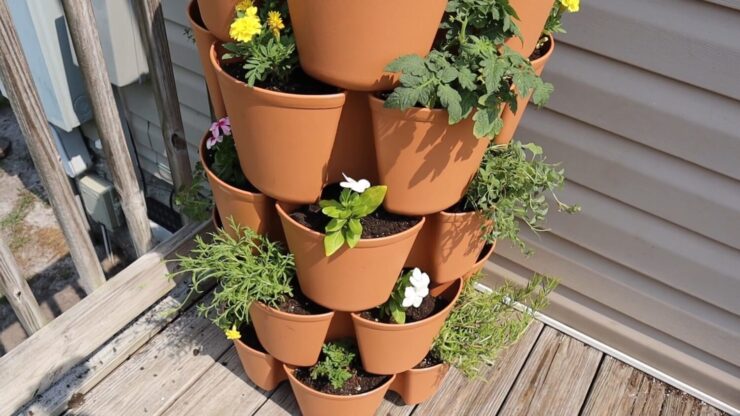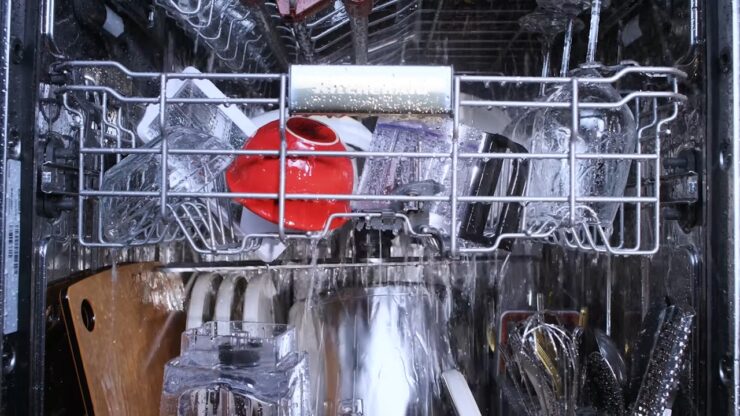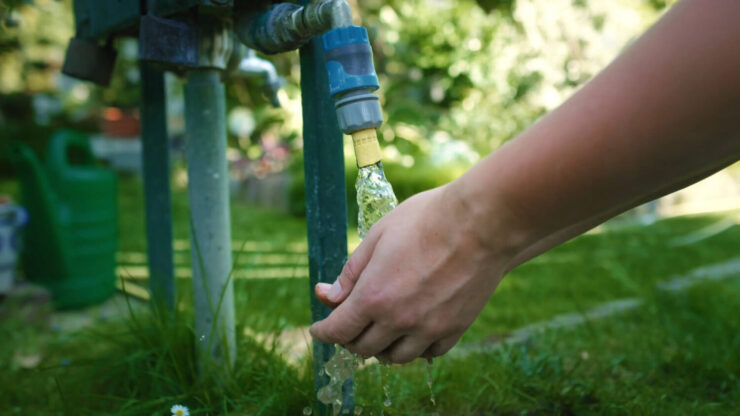The lack of information available to the public, particularly in remote areas, regarding the availability of a continuous and clean water supply remains a significant unresolved issue. Investigations into this gap have revealed ongoing challenges, yet solutions are still forthcoming.
Many social workers have stepped up to educate communities facing acute water shortages, striving to improve awareness and access to clean water. However, these efforts are often constrained by funding, limiting their ability to build the necessary infrastructure to ensure a sustainable water supply.
Securing a continuous water supply demands substantial financial investments and a commitment from both governmental bodies and private companies in the water sector. The economic and infrastructural challenges associated with water management underline the urgent need for robust water conservation practices.
As part of a broader strategy to fortify national resilience, water conservation must become integral to our daily habits. Reducing reliance on main water supplies not only secures water for future generations but also helps protect the environment by decreasing the need for water extraction from rivers and other natural sources.
Considering the critical state of global water resources, conservation should no longer be viewed merely as an optional practice or a last resort during crises. It is essential for managing the interdependencies of water systems, where a shortage in one area can impact water availability in another.
This interconnectedness highlights why many countries, particularly those lacking advanced technologies to combat water scarcity, have emphasized the importance of water conservation. The drive to conserve water is not just a local priority but a global imperative, requiring widespread commitment and action.
Benjamin Franklin penned, “When the well’s dry, we know the worth of water”.
Conserving water involves more than just shortening showers or turning off the tap while soaping up your hands. Nowadays, innovative methods for saving water extend beyond these standard household practices.
Water supplied by local utilities remains the primary source worldwide. However, in some regions, rainwater and greywater have become significant contributors, reflecting a growing societal awareness of the importance of clean water.
A critical question that arises is how much water is wasted and how much is recycled during each use, ensuring consistent access to high-quality water.
Water usage varies significantly across different parts of a home. Activities like laundry or cooking often account for the largest portion of a household’s water bill.
Interestingly, reducing your water bill is directly connected to lowering energy consumption. Thus, a clear understanding of your water usage patterns and the sources of your water is invaluable.
In response, many companies have stepped up by designing innovative products, both automated and non-electronic, that not only save water and energy but also enhance convenience and sustainability.
Through these efforts, in partnership with governments and various sectors, we aim to conserve water and ensure a continuous supply, regardless of weather conditions.
Here’s a short list of identified technologies and initiatives that promotes water-saving benefits:
1. Tier planter

When you’re thinking of putting a landscape in your house, create it with environment awareness and water restriction in mind. Stackable or tier planters can be creatively placed in your house with a minimum space requirement and reduces overflows as it catches the water that runs off the other pots.
This can help sustain the growth of your plants at the same time giving your garden an artistic appearance. If budget is in consideration, you can exploit your mind with do it yourself tips online.
2. Dual flush toilet system

Watching your money go down the toilet can put a strain on your budget. Fortunately, making small changes in habits can be highly beneficial and cost-effective with the right innovations.
The dual flush toilet system incorporates a lever or button that offers two flushing options—one for liquid waste and another for solid waste. This simple yet smart mechanism makes managing your flushing needs straightforward and efficient.
This system has been widely recognized for its ability to significantly reduce water consumption, making it an effective solution for both your wallet and the environment.
3. Low-flow shower heads

Low-flow shower heads don’t compromise on pressure. Modern low-flow shower heads are designed to maintain a strong water pressure using innovative mechanisms.
Some models mix air with water, or distribute water in short, rapid pulses to mimic a continuous stream. This technology ensures a steady, satisfying shower experience, while gradually reducing your water bill, one drip at a time.
4. Dishwasher

Cut down on your water bills significantly by switching to a dishwasher. Skipping the pre-rinse and loading dishes directly into an Energy Star-certified dishwasher not only saves water but is also more efficient than hand washing. According to energystar.gov, using a modern, energy-efficient dishwasher can reduce your utility bills by over $40 annually.
Dishwashers provide better cleaning and disinfection compared to hand washing. An Energy Star-qualified dishwasher can save approximately 5,000 gallons of water per year and uses less than half the energy required for washing dishes by hand, making it a smart choice for both your wallet and the environment.
5. Washing machines

Before purchasing any appliances, consider checking the labels or bar code at the back of the unit for certain energy and water efficiency standards. New clothes washer uses 15 gallons of water per load compared to the 23 gallons used by standard machines.
It also has sophisticated wash systems to flip and spin clothes through a stream of water and a repeated high-pressure spraying feature rather than soaking them in a full tub. Doing the laundry with a full load washing machine is where you can get the most savings from.
6. Grey water systems

Greywater system is one of the most economical recycling approaches towards cutting down your monthly bill.
This can be done by manually collecting water in a bucket from washing machines, using greywater diversion device or greywater treatment. Greywater includes discharge from laundry, kitchen sinks and dishwashers.
7. Rainwater harvesting

Rainwater harvesting perhaps is the cheapest and the most viable alternative source of water. Collecting water from the sky allocated for the future and daily use provides multiple benefits. However free as it is, it can also go on waste if improperly utilised.
Rainwater harvesting has been described elaborately in rainwater harvesting.
Companies like Rainwater Tanks Direct, also help disseminate information and advocate water sustainability within the Australia region.
Why is Water Saving Important?
Gauging your daily water needs can help reduce water consumption along with these effective pondering methods:
- Recognizing
- Recycling
- Saving
We will discuss these three in greater detail.
1. Recognizing
This process entails a thorough comparison of various methods to determine the most water-efficient approach before implementing any changes. For example, you might evaluate the difference in water consumption when brushing your teeth using just a single glass of water versus keeping the tap running.
Similarly, consider the water usage of hand washing dishes compared to operating a dishwasher.
These activities are part of daily habits that often go unnoticed, but they hold significant potential for water conservation. By becoming more aware and mindful of these everyday practices, you can make more informed choices that lead to substantial water savings.
This proactive awareness not only reduces your water bill but also contributes positively to environmental conservation by minimizing unnecessary water usage. Such small changes in daily routines, when adopted widely, can lead to a significant reduction in overall water consumption.
2. Recycling

In efforts to conserve water and reduce environmental impact, one highly effective method is the use of greywater for non-potable purposes such as vehicle washing and garden irrigation. Greywater, which is wastewater generated from household activities like bathing, washing clothes, and sink use, can be recycled and repurposed instead of being treated as waste.
Recycling greywater not only reduces the demand on more pristine water sources, which are becoming increasingly scarce due to overuse and drought conditions, but also maximizes the utility of water. By redirecting greywater from entering sewage systems to irrigating gardens or cleaning cars, we can significantly conserve fresh water.
This approach extends the life cycle of the water used within homes, ensuring that drinking water reserves are used more judiciously and remain available for longer periods.
Using greywater helps in maintaining soil moisture and supports plant life in gardens without the additional need for purified drinking water.
This method of recycling is particularly beneficial in arid regions or in areas experiencing water scarcity. It promotes a sustainable water management system that can lead to long-term ecological and utility benefits, by integrating simple yet effective recycling technologies and systems into everyday practices.
3. Saving
Reducing water consumption involves a comprehensive understanding of where and how water is wasted during everyday activities. The Environmental Protection Agency (EPA) highlights simple but effective habits that can lead to significant water savings.
Merely turning off the tap while brushing your teeth can conserve as much as 8 gallons of water each day. Such straightforward changes in daily routines can cumulatively lead to substantial reductions in water usage.
Moreover, water availability is heavily impacted by weather-related events, which vary significantly from year to year. Extreme weather conditions, such as droughts, floods, and hurricanes, can disrupt the normal distribution of water, affecting its availability in communities.
These disruptions highlight the importance of efficient water management strategies that not only focus on reducing consumption but also on ensuring a resilient water supply system that can withstand and adapt to weather-related challenges.
Some are faced with the harrowing experience of water restrictions during extended drought, while others in the worst case; experience not having water at all especially when calamities induced severe and extensive damage to water facilities.
In our greatest desire to continue our existence in many years to come, the least that we can do is to break our dependence from the government and water sectors by doing simple household activities with environmental consciousness and water restrictions in mind.









